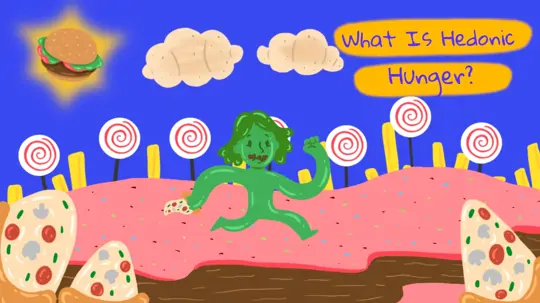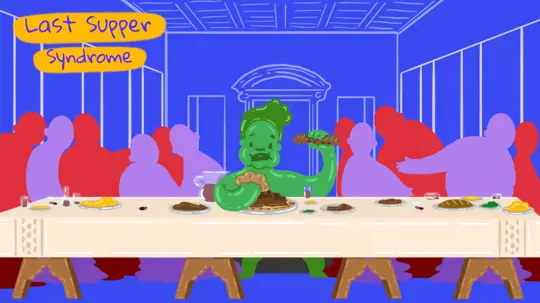
Start feeling better today!
Connect with your therapist today and take control of your life like our 850.000 happy clients.
Get StartedFear of Holes
Fruits like strawberries and pomegranates, bread with seeds, bubbles, honeycombs, and sunflowers... While some people enjoy these things, for others, they can be objects of intense fear and disgust. "Who could be afraid of strawberries?" you might think.
Since trypophobia, the fear of holes, is not one of the most well-known phobias, you may never have heard of it in your daily life. To better understand trypophobia, let's first take a brief look at what a phobia is.
What is a Phobia?
A phobia is an excessive and irrational fear that is constantly triggered by an object, event, or situation. The person reacts emotionally, cognitively, and physically to the phobic situation1.
Fear is a perfectly normal reaction to dangerous situations, objects, or events. Therefore, for a fear to reach the level of a phobia, it is expected to meet the following criteria2:
- It is triggered by encountering a specific situation (e.g., height) or object.
- If the object or situation is encountered, intense anxiety and fear are expressed.
- The situation or object causing fear and anxiety is to be avoided.
- Fear and avoidance behaviors are persistent and do not disappear spontaneously after a certain period of time.
- The fear or anxiety affects the person's life and functioning. They become unable to go to certain places or do certain activities.
- The object or situation that is the subject of the phobia is not something that affects everyone in society. That is, they are objects or situations that are considered normal for the majority of the society in which they are experienced.
What is Trypophobia (Fear of Holes)
Also known as fear of holes, trypophobia is the extreme fear and disgust of the accumulation of holes and cavities on the surface of objects. Honeycombs, strawberries, stones with holes, and cheese with holes are examples of objects whose perforated pattern causes intense discomfort and fear.
Fear of holes is one of the specific phobia types. Trypophobic individuals may avoid perforated surfaces as well as objects with repetitive patterns or small clusters of holes, such as stones and sponges3.
It is known that for people with trypophobia, seeing clusters of holes on various objects can cause intensely disturbing internal organ reactions4. Also, individuals with trypophobia may experience severe fear, nausea, itching, sweating, tremors, and even panic attacks when they see such objects5.
Trypophobia Symptoms
It would not be wrong to say that some criteria determine whether people who are intensely uncomfortable with perforated surfaces can be called "trypophobic". In fact, being uncomfortable with these surfaces is not enough. It is also important to have the following characteristics1, 3, 4:
- Emotional discomfort
- Intense fear and anxiety
- Feeling of disgust
- Getting chills regardless of temperature
- Itching without any physical trigger
- Nausea
- Panic attacks
- Rapid breathing
- Sweating
- Vomiting
In the case of fear of holes, all these symptoms are permanent; they do not choose a particular place or time. The same symptoms will always occur when faced with perforated surfaces. It also disrupts the functioning of daily life. Individuals may be deprived of many jobs they do or have to do in their daily lives due to the phobias and symptoms they experience.
Objects and Stimuli that Trigger Trypophobia
When talking about perforated surfaces and objects, examples may not come up because you have not noticed or experienced trypophobia before, but depending on the intensity of the problem experienced by individuals with trypophobia, their attention is focused on the following objects, and they perceive these objects more easily than other people1, 3-6:
- Types of cheese with holes
- Small stone fruits such as strawberries, raspberries, papayas and kiwis
- Fruits with seeds like pomegranates
- Honeycombs
- Scabs on the skin that begin to heal
- Sponges
- Stone roads
- Bubbles
- Metal foams containing aluminum
- Multiple photo collages created with any object
- Perforated image created by seed loaves
- Animals like corals
- Lotus seed pods
- Man-made patterned or spotted fur or clothing
- Dalmatian dogs and leopards
These objects really bother people with trypophobia and can cause the physiological symptoms listed in the section above. Moreover, just encountering them does not lead to the emergence of these reactions; even the imagination of trypophobic people can cause the symptoms to be seen. So what causes trypophobia?
Causes of Trypophobia
You don't hear trypophobia outside every day. As it is not one of the concepts such as anxiety and depression that we encounter in our daily lives, it has not been the subject of much scientific research. Therefore, we do not know much about the factors that reveal and develop trypophobia.
Some researchers have suggested that trypophobia develops evolutionarily. They emphasized that trypophobic stimuli, i.e., objects with perforated surfaces, were based on what our ancestors had encountered and avoided in the past as poisonous organisms and dangerous animals7.
In addition, based on the behavioral theory, it is suggested that it can be seen after experiencing negative experiences with the stimuli that trigger trypophobia, as in other phobias8.
Other studies have shown that while non-trypophobic individuals only show an aversion, that is, an avoidant reaction, to trypophobic stimuli related to the disease, trypophobic individuals exhibit this to both disease-related and unrelated stimuli9.
While investigating the causes of trypophobia, it has been observed that people with trypophobia are more sensitive to disgust and are different from other people in terms of personal distress. For this reason, they reported in studies that a sensitive and distressed personality structure is associated with trypophobia10.
Apart from all these, trypophobia has also been considered a type of psychopathology. In particular, it has been supported by research that there are other psychological disordersObsessive Compulsive Disorder (OCD) and other specific phobias accompanying trypophobia11. Based on this, it has been suggested that trypophobia is a subtype of OCD.
In addition, it is known that people who experience trypophobia are diagnosed with depression, generalized anxiety disorder, social anxiety disorder, and panic disorder at high rates, and they struggle with other anxiety and mood disorders accompanying trypophobia11. Therefore, it is discussed that other negative experiences they have had may have a causal effect on people's experiences of trypophobia.
Overcoming Trypophobia
When it comes to research and practice, there is nothing that can say that this is the best method and approach for trypophobia. While new research is being done even to understand trypophobia, we can say that there is no specific treatment for trypophobia.
Systematic desensitization and response prevention, which is a behavioral approach to trypophobia as with other phobias, can be used. Individuals can be gradually exposed to trypophobic stimuli, preventing the dysfunctional reactions they use to combat the phobia and bringing them into contact with the phobic stimulus. This is not direct exposure, but a gradual and systematic process, taking into account the physical, emotional and behavioral difficulties experienced by individuals.
Behavioral methods used for trypophobia can be supported by cognitive methods, and Cognitive Behavioral Therapy (CBT) can be used functionally to effectively combat trypophobia. By working on the irrational thoughts and beliefs that the individual has about trypophobic stimuli, alternative thought patterns about trypophobic stimuli can be produced.
In addition, exposure to trypophobic stimuli, both behaviorally and cognitively, can lead to intense discomfort and increased anxiety. In this case, it would be effective to use relaxation exercises and help individuals learn or provide resources that they can apply in their daily lives.
Sources
- Martinez-Aguayo, J.C., et al., 2018, Trypophobia: What Do We Know So Far? A Case Report and Comprehensive Review of the Literature, Frontiers Psychiatry.
- From the American Psychiatric Association, 2013, Diagnostic and Statistical Manual of Mental Disorders, Fifth Edition (DSM-5), Reference Handbook of Diagnostic Criteria, trans. Köroğlu E, Physicians Publication Association.
- https://my.clevelandclinic.org/health/diseases/21834-trypophobia
- https://www.psychologicalscience.org/news/releases/fear-of-holes-may-stem-from-evolutionary-survival-response.html
- https://www.verywellmind.com/trypophobia-4687678
- https://evrimagaci.org/tripofobi-delik-korkusu-nedir-delikli-ve-gozenekli-yapilar-neden-korku-veor-tiksintiye-neden-ollu-3859
- Cole, G.G., et al., 2013, Fear of Holes. Psychological Sciences.
- https://evrimagaci.org/tripofobi-delik-korkusu-nedir-delikli-ve-gozenekli-yapilar-neden-korku-veor-tiksintiye-neden-ollu-3859
- Kupfer, T.R. et al., 2018, Disgusting Clusters: Trypophobia as an Overgeneralized Disease Avoidance Response. Cognitive Emotions.
- Imaizumi, S., et al., 2016, Trypophobia is Predicted by Disgust Sensitivity, Empathic Traits, and Visual Discomfort. Springerplus.
- Vlok-Barnard, M., et al., 2017, Trypophobia: an Investigation of Clinical Features. Brazilian Journal of Psychiatry.





